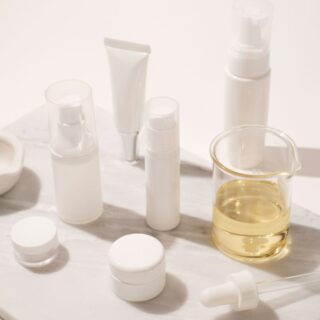Why You Need Natural Sunscreen
You already know that daily sun protection is non‑negotiable, yet choosing the right product can feel overwhelming. Natural sunscreen gives you broad‑spectrum defense without the chemical filters that may irritate skin or harm coral reefs. By the time you finish this guide you’ll understand exactly how natural formulas shield your skin, how to decode labels, and how to make a confident switch today.
What Exactly Makes a Sunscreen “Natural”?
At its core, a natural sunscreen relies on mineral UV filters—primarily non‑nano zinc oxide and titanium dioxide—to form a physical barrier that reflects UVA and UVB rays. Unlike chemical filters that absorb UV energy and transform it into heat, mineral particles sit on top of your skin and start protecting immediately. Supporting ingredients often include plant oils (jojoba, sunflower), botanical antioxidants (green tea, vitamin E), and clean emulsifiers that keep the formula stable without synthetic fragrances or dyes.
Key Traits of Natural Sunscreen
- Mineral UV filters: Zinc oxide, titanium dioxide
- Broad‑spectrum coverage: Blocks UVA for aging and UVB for burning
- Immediate efficacy: Works the moment you apply it—no 15‑minute wait
- Low irritation potential: Ideal for sensitive, acne‑prone, or baby skin
- Eco‑friendly: Reef‑safe, biodegradable, and free from oxybenzone or octinoxate
Natural vs. Chemical Sunscreen: Spot the Difference
| Feature | Natural (Mineral) | Chemical |
| Main filters | Zinc oxide, titanium dioxide | Avobenzone, octocrylene, homosalate, more |
| How it protects | Reflects & scatters UV | Absorbs UV, converts to heat |
| On‑skin feel | Thicker; can leave a cast if not tinted | Lightweight, invisible |
| Safety profile | FDA GRASE*; low systemic absorption | Some filters detected in bloodstream at trace levels |
| Reef impact | Reef‑safe | Certain filters linked to coral bleaching |
| *Generally Recognized As Safe and Effective |
For many of you, the takeaway is balance: if you crave both clean ingredients and skin‑friendly performance, natural sunscreen checks every box once you learn to apply it correctly.
Key Ingredients to Seek Out
- Non‑nano zinc oxide (15–25 %) – Gold‑standard mineral filter with full UVA/UVB coverage.
- Non‑nano titanium dioxide (5–10 %) – Complements zinc by boosting UVB protection.
- Plant oils (coconut, jojoba, squalane) – Keep the formula spreadable and lock in moisture.
- Botanical antioxidants (green tea, raspberry seed, vitamin C&E) – Neutralize free radicals generated by sun exposure.
- Iron oxides (optional) – Provide a tint that camouflages white cast and adds HEV‑blue‑light defense.
When you scan a label, prioritize zinc oxide first; if it’s under 10 % the SPF claim may be weak. Look for “non‑nano” wording to ensure particles are large enough to stay on the skin’s surface.
How to Read a Natural Sunscreen Label
Regulatory jargon can feel cryptic, so use this simple checklist:
- SPF 30 or higher for everyday wear; SPF 50+ during intense outdoor activity.
- Broad‑spectrum must appear on the front panel—this confirms UVA protection.
- Water‑resistant 40 min/80 min statements indicate how long sweat or swimming won’t erode the shield.
- Active Ingredients box should list only zinc oxide and/or titanium dioxide.
- Inactive Ingredients should be short, pronounceable, and free of parabens, phthalates, synthetic fragrance, and oxybenzone.
Choosing the Right Natural Sunscreen for Your Skin Type
- Oily or acne‑prone: Seek feather‑light gels with 15–20 % zinc oxide, silica, or rice starch to absorb excess sebum.
- Dry or mature: Creamy bases rich in squalane or shea butter maintain elasticity and prevent fine lines.
- Sensitive or eczema: Fragrance‑free balms with minimal inactive ingredients calm reactive skin.
- Outdoor athletes: Water‑resistant sticks or sprays ensure grip during sweat sessions.
- Kids & babies over six months: Pediatric formulas featuring non‑nano zinc only, no titanium dioxide, and hypoallergenic bases.
Best Practices for Applying Natural Sunscreen
- Quantity matters: Use two fingers’ length of product for face and neck, a full shot‑glass (≈1 oz) for body.
- Layer last: Apply after moisturizer but before makeup. Mineral particles form the final protective lattice.
- Reapply diligently: Every two hours, or immediately after swimming, sweating, or toweling off.
- Mind the missed spots: Ears, hairline, eyelids, lips, and backs of hands are frequent burn zones.
- Pair with physical shade: Hats, UPF clothing, and seeking shade amplify your SPF’s effectiveness.
Eco‑Friendly Benefits of Natural Sunscreen
By choosing a reef‑safe formula you’re not just protecting your skin—you’re safeguarding marine life. Mineral filters do not bio‑accumulate in coral tissue, and biodegradable bases shorten environmental persistence. Planet‑friendly packaging—recyclable aluminum tubes, sugar‑cane resin bottles—further reduces your footprint.
Common Mistakes to Avoid
- Under‑applying: Anything less than the recommended dose cuts labeled SPF in half.
- Skipping reapplication on cloudy days: Up to 80 % of UV radiation penetrates clouds.
- Relying on makeup with SPF: Powders and foundations seldom deliver the volume needed for full protection.
- Using expired products: Zinc oxide may settle; check the PAO symbol (period‑after‑opening) and toss after 12 months.
The Takeaway: Embrace Natural Protection
Switching to natural sunscreen empowers you to guard your skin with ingredients you can pronounce and trust. You’ll gain broad‑spectrum coverage, reduce environmental impact, and cater to sensitive skin—all without sacrificing comfort or cosmetic elegance. Ready to make the leap? Choose a mineral‑based SPF 30+ today, apply it generously, and step outside knowing you’ve given your skin and the planet the healthy protection they deserve.


